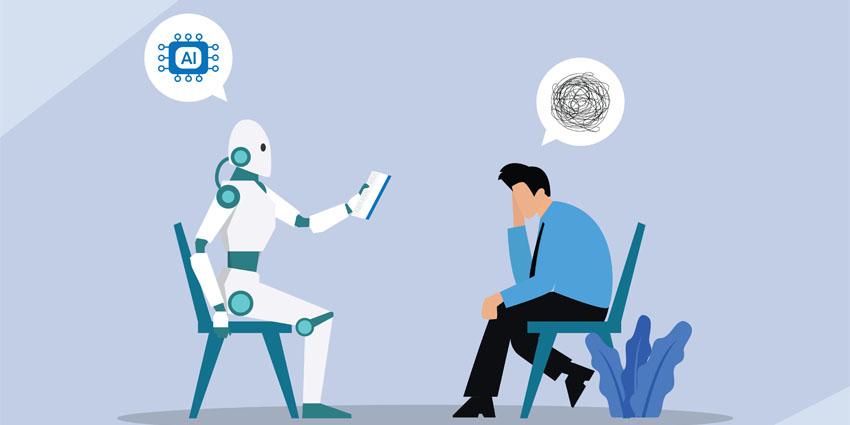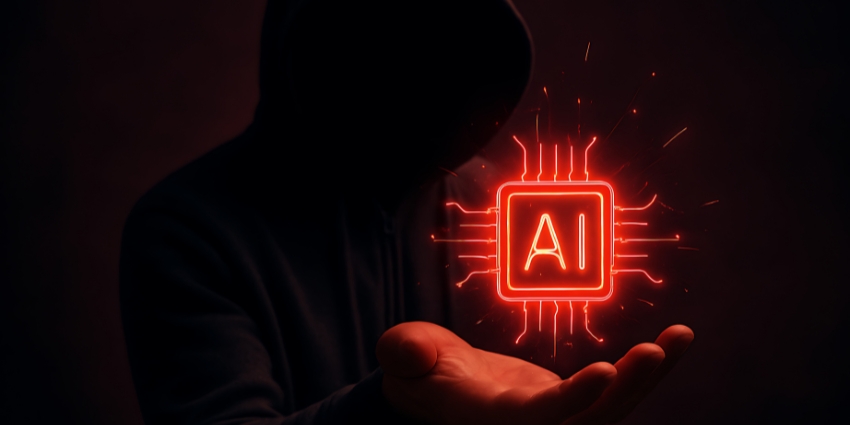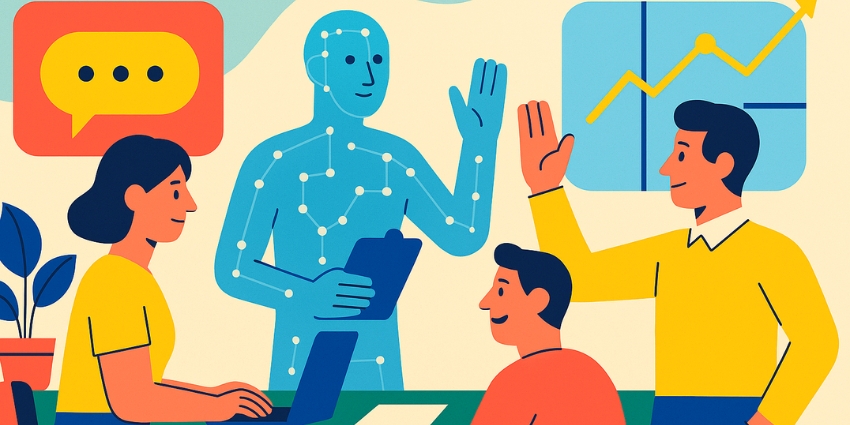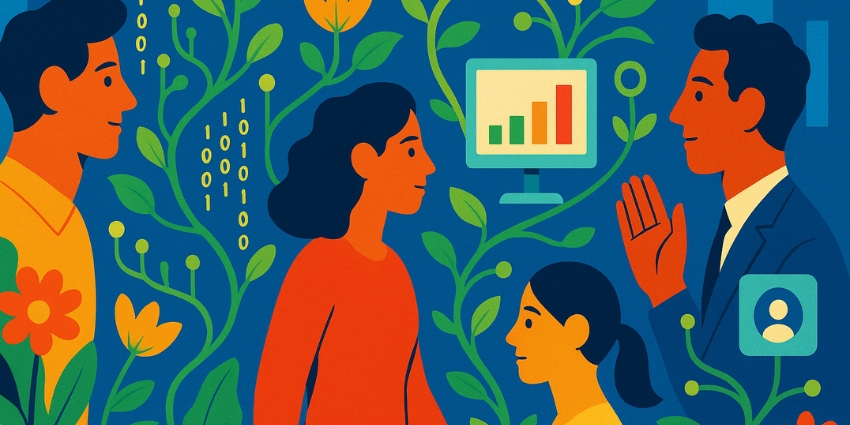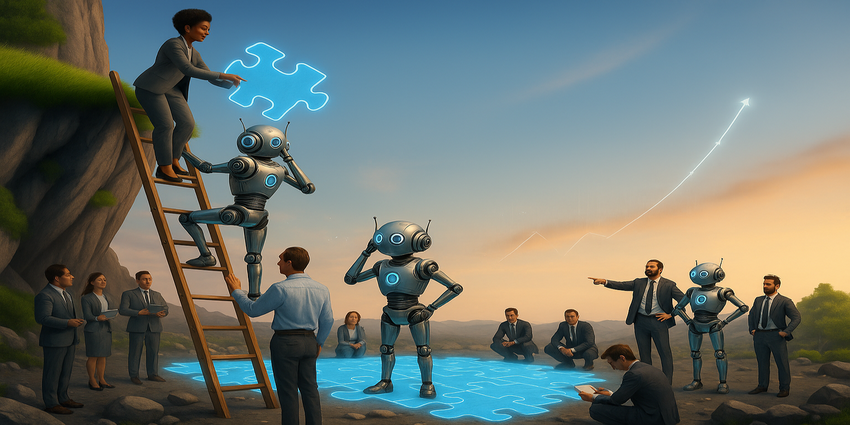AI is no longer pitched as just another tool, yet another vehicle for boosting productivity and refining workflows in a long line of systems and platforms. It’s now being packaged and presented as a genuine assistant, or even more significantly, an authentic digital colleague.
That level of import, and the colossal investments that thousands of businesses around the globe have made into the technology, has quickly transformed AI into a performance baseline, a compliance metric, and in some cases, a proxy for competency.
At the language learning app Duolingo, executives recently informed their workforce that AI proficiency will now factor into performance reviews, and teams must justify new hires by demonstrating that the work can’t be automated. Meanwhile, a Howdy survey of US professionals found that one in six workers admit to pretending to use AI to avoid being judged incompetent, even when their actual workload doesn’t require it.
These two cases are arguably symptom signals, and behind every mandate to “use AI or fall behind” are human minds under pressure; minds that crave mastery, connection, and acknowledgement. When algorithms or checkboxes displace these needs, workers may react in ways both overt (such as burnout and disengagement) and latent (including identity erosion and dissociation).
The mandate to adopt AI is reshaping not only workflows but also workers’ sense of self, socially, mentally, and emotionally. It’s time to ask whether this is a benign evolution of what work becomes, or if it’s creating a new dissociative frontier. Are we liberating humans from drudgery, or stripping away the very impulses that make work meaningful?
Christina Muller, Workplace Mental Health Expert & Consultant at R3 Continuum, framed the tension succinctly to UC Today, “AI is a partner in the workplace, not a replacement for talent — if we choose to see it that way.”
However, she warned that the danger lies in overreach:
The issue comes when people use AI to replace their creativity, the work they already do so well. Sure, some tasks can be automated, but the intellectual capital and nuance humans bring can’t be fully replicated.”
Fulfilment vs Mechanisation, and Losing Meaning Under Efficiency
The transition from hands-on work to managing AI can feel like graduating from craftsperson to curator. Dr Daniel Glazer, a Clinical Psychologist with a special interest in trauma, described to UC Today how “when someone’s role becomes primarily about managing AI-led processes or curating content generated by a model, they can lose the sense of craftsmanship that used to ground their professional identity.”
Over time, the gratification loop, such as solving a problem or producing something, becomes more procedural and less emotionally resonant. This shift can feed depersonalisation: “a sense of observing yourself working rather than doing the work,” Glazer warned.
Muller saw the flip side, too. “Research supports that real fulfilment isn’t rooted in efficiency but in feeling that the work you do matters, that it makes a difference.” To her, the real risk is that reliance on technology can hollow out that sense of mission. “If we lean on technology to replace too much of that human element, people can lose the sense of meaning that actually drives performance and, ultimately, satisfaction.”
This paradox is evident in empirical surveys. A longitudinal German panel study suggested that AI adoption is negatively associated with workers’ well-being when mediated by economic fears and health stressors. Another study in Nature found that AI’s effect on well-being is indirect: it depends on how tasks are restructured, optimised, or stripped of human judgment.
Additionally, according to a study from PubMed Central, in service sectors, “AI job anxiety” is significantly and negatively correlated with life satisfaction, mediated by negative emotion. This underscores that psychological stress is not just speculative but detectable, indicating that even the most significant gains in productivity may carry hidden costs for workers’ meaning and morale.
Disconnection and the Social Cost of AI Middle Management
Isolation, not automation, may become the signature injury of AI-driven work. Muller put it plainly:
I see the real risk being isolation, not automation. People instinctively need to feel connected to what they’re doing to feel fulfilled; otherwise, they can become disengaged and even experience burnout. The trickling impact on identity and even accountability can become more apparent with more reliance on AI.”
AI adoption can horizontally erode interpersonal spaces. With asynchronous, algorithmically mediated workflows, fewer in-person checkpoints, and communication filtered through tools, the sense of shared struggle or team identity may fade. In such an environment, emotional intelligence and relational capacity risk becoming collateral damage.
Fundamentally, if creativity and empathy are undervalued, we may measure worth in terms of efficiency rather than contribution. In turn, AI has the potential to dull the emotional intelligence that keeps workplaces connected and morale high.
Much has been made of the AI literacy of younger generations entering the workforce, as they have grown up more organically with the technology. Putting aside the separate, equally daunting concern about AI displacing junior roles, there is also a worry that while younger workers may be more technically fluent, they are also more amenable to metric conditioning.
“They were born fully into a digital world, meaning they are fluent in the landscape and adaptable, but also vulnerable to conditioning through instant gratification — likes, metrics, and automated responses,” Muller said. “This may seem more efficient, but it can create distance between the human touch and a sense of purpose.”
“AI also doesn’t carry the same ethical responsibility that humans do, and that’s consequential in safety-sensitive industries or in roles where the stakes are high, like healthcare, aviation, and finance.”
When relational dynamics shift, workers may become less attuned to nonverbal cues, less comfortable with ambiguity, and more passive in collaborative spaces. The technology not only changes what we do but subtly remaps how we relate.
Anxiety in Overdrive Means Comparing to the Machine
Once human effort is routinely compared to a near-instantaneous AI baseline, performance anxiety intensifies.
Muller acknowledged a nascent phenomenon: “Employees may begin to compare themselves to the output of AI, feeling that they fall short or aren’t good enough. For individuals who already have a baseline of anxiety or perfectionistic thinking, these tendencies could be amplified by the projection of a ‘perfect’ result that doesn’t fully reflect their own abilities.”
Dr Glazer sees a systemic stress pattern in real time:
AI accelerates everything. People are being asked to adapt faster than their brains can properly process the change. This mismatch creates a sustained stress response, cortisol spikes, disrupted sleep, cognitive fatigue. For people in cognitively demanding roles, the constant context-switching between human thinking and machine supervision can feel mentally dissonant. It’s like running two operating systems in parallel.”
The hybrid demands of human and machine thinking strain attention, increase cognitive load, and may erode concentration and emotional capacity over time. In the extreme, he warns, these dynamics can escalate: “For others, especially those already prone to obsessive focus or digital dependency, it risks sliding into dissociative experiences.”
While “AI-induced psychosis” is not yet a formal clinical diagnosis, Glazer suggests it may serve as a helpful shorthand for environments where overstimulation, isolation, and loss of perceived control converge.
Over time, we may observe new categories of mental health stress: digital dependencies, algorithmic comparison disorder, existential blankness, perhaps even identity fragmentation. Therapists may need fresh vocabulary and treatment modalities tailored to life in a human-AI hybrid world.
Guidance for Leaders to Keep Humanity in the Loop
For organisational leaders across the C-Suite, the psychological hazards of AI adoption aren’t abstract but strategic risks. If insights from interviews and research converge, we can propose a set of guardrails that mitigate the damage while preserving upside.
First, narrative framing matters. Leaders must communicate that AI is an augmentation, not a replacement. As Muller outlined:
Training is paramount in helping employees understand that AI supports their already good work and is not a replacement for it. Without prefacing it as such, there will be a rise in anxiety and worries about being expendable.”
Second, pace and space. Push too fast and you cognitively overload your people. Dr Glazer noted that the healthiest adopters are those who allow time for emotional adjustment, who talk openly about anxiety, and who teach when not to use AI.
Third, preserve human connection. Build rituals, check-ins, peer collaboration, and spaces where work is done together, not just via algorithmic handoff. Reinforce that empathy, judgment, and moral discretion still reside in people.
Fourth, measure for meaning, not only metrics. Don’t let AI effectiveness become the sole performance bar. Reward creativity, judgment, mentoring, judgment calls and emotional labour.
Fifth, invest ethically and equitably. Surveillance, tracking, and efficiency mandates must be counterbalanced by psychological safety nets, mental health training, and work design that acknowledges cognitive limits. Studies on “STARA awareness” (fear of automation, robotics, and AI) indicate that increased awareness of automation risks is correlated with higher job stress and lower affective well-being, with resilience acting as a moderating factor.
Finally, develop new psychological frameworks. As Muller anticipated: “Therapists will need language and training to address these dependencies and patterns of overreliance, which could give rise to new modalities of treatment in the future.” Organisations should partner with psychological experts early on to monitor emerging stress patterns and develop proactive interventions rather than reactive ones.
A Human-Centred AI Future
When AI becomes the measuring stick of performance, the risk is not only job loss but identity loss. Workers are not merely code optimisers or agent managers; they are meaning-makers, collaborators, and moral arbiters. If we rush towards efficiency while ignoring the psyche, we may end up with workplaces whose output is high but whose people are hollowed out.
Yet, the tension is not binary. AI can free us from drudgery; it can elevate human judgment. However, only if we develop adoption strategies that incorporate human agency, purpose, and connection. For leaders, the question is not whether to adopt AI but how to adopt it without turning your workforce into management agents for machines. Because, in the end, the real change won’t be in the tools we use, but in how human we remain while using them.
“We need to embrace AI as it’s here to stay,” Muller concluded, “but in that embrace, we need to keep humanity and its human touch a part of the equation if we want to keep our workforce as healthy and productive as possible.”
